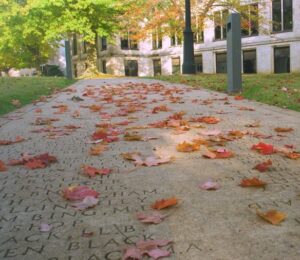KANAZAWA, Japan Oct. 1, 2021 / PRNewswire / – Researchers from the University of Kanazawa describe Chemical Society Reviews how large cyclic molecules can be used for the synthesis of large metal complexes with two or more metal atoms.
In polymetallic complexes, two or more metal atoms combine with organic molecules in larger and more complicated molecular structures. Such complexes are used in the development of p. Eg new catalysts, molecular magnets and sensors. In the past, polymetallic complexes were often synthesized by the trial and error method of mixing metal ions with organic ligands, resulting in unpredictable compounds. The modern approach involves macrocycles: organic molecules that have a ring structure. The interior space of macrocyclic molecules can be used to anchor a polymetallic complex during its formation, a "trick" that allows for the reproducible synthesis of predictable end products. Shigehisa Akine from the University of Kanazawa, Mark MacLachlan from the University of British Columbia (UBC) and NanoLSI (University of Kanazawa), and the doctoral student at UBC Mohammad Chaudhry now published a comprehensive overview of the synthesis of polymetallic complexes via the macrocycle pathway, which also discusses how certain properties of a complex can be adjusted by changing the composition of the macrocycle used.
Scientists first discuss the origins of the field. In the 1970s, it was shown that the so-called macrocycle dinuclear complexes [2+2] could be formed using a relatively simple organic compound, with the molecular formula C 9 H 8 O 3 as a building block. These dinuclear complexes consist of two metal atoms that sit in an organic "lattice" with double symmetry. Similar Robson macrocycles, as they are called, can be obtained with 6 metals, the general structure [3+3] having a triple (triangular) symmetry. Robson's macrocycles are still investigated today, but the method remains somewhat unpredictable.
The researchers then explain how macrocycles [2+2] (with double symmetry) and [3+3] (with triangular symmetry) also appear in contemporary designs. Compounds [3+3] are currently being actively investigated for their potential as single-molecule magnets, molecules that exhibit (para) magnetism. Using macrocycles, the magnetic properties of the resulting molecules can be adjusted by changing the size and composition of the group. Regarding the complexes [2+2] it is observed that they have cavities that can be exploited to create unique clusters.
Another interesting class of multimetallic structures are the 'Pacman macrocycles', constructed from ligands that show a cleft. This geometry can be used to capture and activate small metal-ligand-metal molecules. In this context, Pacman macrocycles with two uranium atoms have been intensively studied in the context of nuclear waste processing. Akine, MacLachlan, and Chaudhry also show that, more generally, by using Pacman ligands, chemists have succeeded in creating several structurally and chemically unique polymetallic complexes.
The last type of macrocycles discussed by researchers features pyridine rings (pyridine is similar to benzene, with a CH unit replaced by nitrogen). Pyridine ring macrocycles offer high flexibility and can be used to synthesize a variety of complicated multimetallic structures; the authors give many examples of complexes containing silver.
The scientists end their review with an insight into this fascinating area of research. Specifically, they point out that a future trend is likely to be mimicking group activity that occurs naturally in living systems. In fact, polymetallic complexes play a key role in important reactions such as the reduction of nitrogen to ammonia and the oxidation of carbon monoxide to carbon dioxide. Citing Chaudhry et al. : "The potential selectivity and control offered by the macrocycle template creation method is especially attractive for the consistent and reproducible production of functional multi-metal clusters."
Image:
https://nanolsi.kanazawa-u.ac.jp/wp-content/uploads/2021/09/fig1.jpg[19459010
Figure 1. Contemporary macrocycles used for the synthesis of discrete polymetallic complexes: (a) concept, (b) chemical structures of representative polymetallic complexes.
Reference:
Mohammad T. Chaudhry Shigehisa Akine and Mark J. MacLachlan . Contemporary Macrocycles for Discrete Polymetallic Complexes: Precise Control over Structure and Function, Chem. Soc. Rev., 2021, Advance Article
DOI https://doi.org/ 10.1039 / D1CS00225B
Contact:
Hiroe Yoneda
Deputy Director of Public Affairs
WPI Nano Life Science Institute (WPI-Nano Life Science Institute)
] Kanazawa University
Kakuma-machi, Kanazawa 920-1192, Japan
Email: [email protected]
Tel: +81 (76) 234- 4550
About the Nano Life Science Institute (WPI-NanoLSI)
Nano Life Science Institute (NanoLSI) at Kanazawa University is a research center established in 2017 as part e of the Initiative of the World Premier International Research Center of the Ministry of Education, Culture, Sports, Science and Technology. The objective of this initiative is to form world-class research centers. NanoLSI combines the most advanced knowledge of bio-scanning probe microscopy to establish 'nanoendoscopic techniques' to directly image, analyze and manipulate biomolecules to understand the mechanisms that govern life phenomena such as disease.
About the University of Kanazawa
http://www.kanazawa-u.ac.jp/e/[19459010
As the leading comprehensive university on the Sea Coast from Japan Kanazawa University has contributed greatly to higher education and academic research in Japan since its founding in 1949. The University has three faculties and 17 schools offering courses in subjects including medicine, computer engineering, and the humanities.
The University is located on the coast of the Sea of Japan in Kanazawa – a city rich in history and culture. The city of Kanazawa has a highly respected intellectual profile since the fiefdom (1598-1867). Kanazawa University is divided into two main campuses: Kakuma and Takaramachi for its approximately 10,200 students, including 600 from abroad.
SOURCE Kanazawa University




Be First to Comment